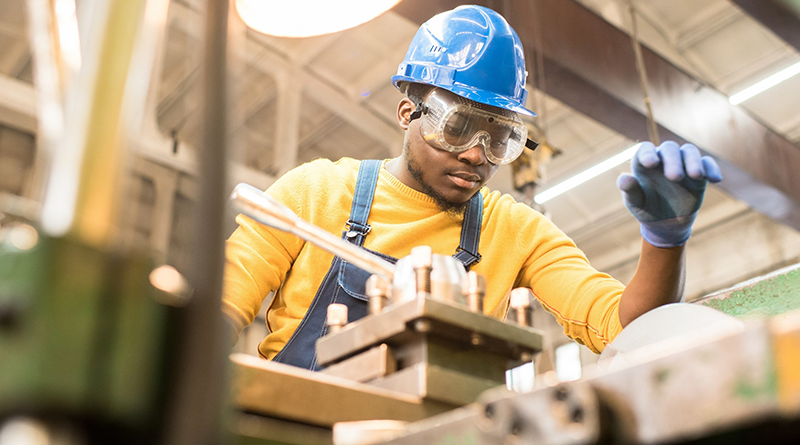5 Ways Spray Technology Can Enhance Your Safety Protocols

13
Jul 21
A focus on safety means a focus on your employees and your products. To ensure standards don't dwindle it's always a good idea to review your processes periodically.
.meet safety standards and ensure your products improve workplace conditions, reduce worker injuryDid you know spray technology can enhance safety protocols? A quick inspection of your coating, lubricating and cleaning operations can uncover ways to
Reduce Worker Injury: Keep Coatings and Lubricants Off the Floor and Out of the Air

Applying just the right coating amount on products and equipment is a pain point for many processors. Over-application means slippery equipment and floors, and too much misting can compromise air quality. Fortunately, Precision Spray Control (PSC) systems, one of the latest advances in spray technology, solve mist and safety issues.
With these systems, the proper volume of oil or lubricant is placed directly on the target and nowhere else. Most PSC systems also do not require compressed air – the source of most misting. PSC enables hydraulic PulsaJet® nozzles to produce very small droplets, which eliminates the need for air atomizing nozzles in many operations.
Improve Workplace Conditions: Automate Your Cleaning

Preventing product contamination requires an effective sanitation program. Many processors deploy workers to clean and sanitize on a regular basis. This approach can be effective but it’s also risky. Manual cleaning is inconsistent because no two workers clean exactly the same way. It also exposes workers to repetitive use injuries, toxic chemicals and accidents when entering tanks or climbing on equipment. That’s why many manufacturers are turning to automated spray technology.
ensure complete coverage and effective dirt, debris and pathogen removal.VeeJet® spray nozzlesUsing spray nozzle manifolds to clean conveyors and belts is more efficient than manual washdown. The overlapping spray patterns of our
Cleaning tanks, totes, drums, vats or other vessels can also be automated to reduce contamination risk from batch to batch. Automated tank cleaners provide quick, thorough and repeatable cleaning and can dramatically reduce maintenance downtime. In addition, your workers no longer need to get inside the tank, risking injury and toxic chemical exposure.
When selecting automated tank cleaning equipment, look for a manufacturer that can help guide you through the process. Proper specification requires an in-depth understanding of impact, throw and coverage. Work with a supplier that has a complete line of equipment. For example, our TankJet® product line includes dozens of options, including spray balls, nozzles and motor/turbine-driven machines. These options can clean tanks as large at 100 feet in diameter.
Improve Workplace Conditions: Use Spray Guns Designed for Safety and Comfort

Some areas in your plant -- such as walls and floors – are often cleaned by workers using handheld spray guns. When choosing spray guns, look for designs that maximize worker safety and comfort with features like trigger locks, textured grips, handles that stay cool even when spraying warm solutions and an ergonomic design. Be sure to evaluate the materials of construction too. Quality materials mean spray guns will last even at maximum flow and pressure conditions.
Ensure Products Meet Safety Standards: Produce Non-Toxic Cleaners On-Site

Workplace cleaning has increased exponentially and so have concerns about toxic chemical exposure. However, there is a way to kill pathogens and germs without putting your workers at risk. Non-toxic cleaning and disinfecting solutions made from water, salt and electricity can be generated on-site in your facility using

